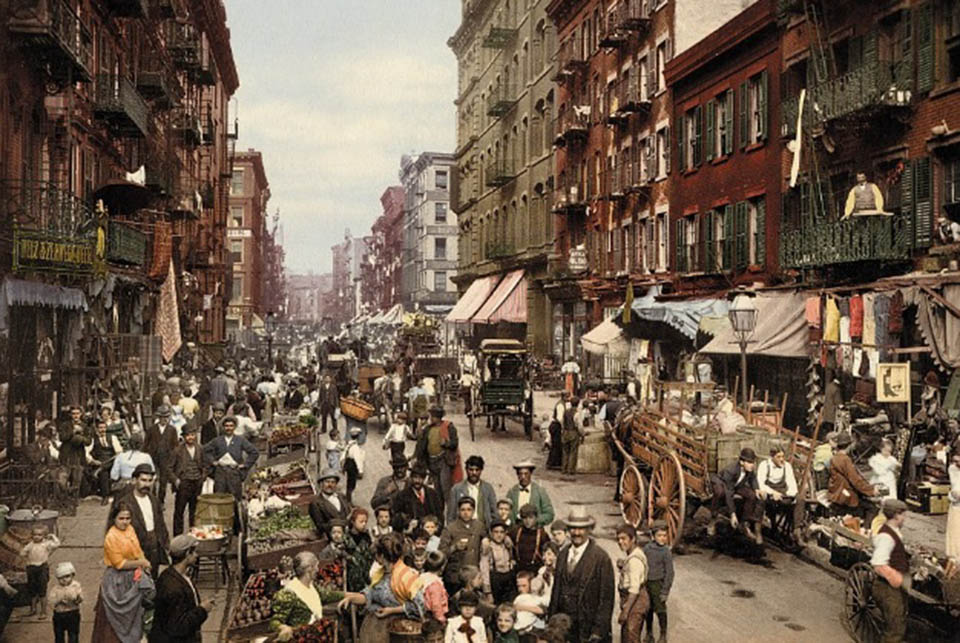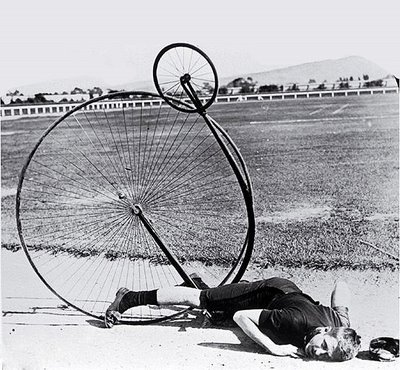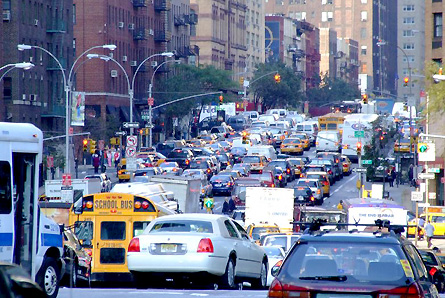
I have made some progress. My time machine is not quite working, but I now have read-only access to the internet of the future. I googled (yes, still the Master of Search) "e-bike regulations" and found an article of interest from Salon:
WEDNESDAY, JAN 17, 2153 12:45 PM -0700
From horses to ecycles:
A brief history of vehicle regulation
How the mayhem came to pass
DAVID CLARKE, ASSOCIATED PRESS
TOPICS: WELL-OILED CULTURE, FROM THE WIRES, CARS, BICYCLES, GREEN ENERGY, ROLLER CULTURE, HISTORY
DETROIT (A-P) — Transportation has evolved. From the good old days before the wheel when everyone, not being carried by their slaves, walked—to today's teaming urbanscapes of walkers and rollers. There was a time when horses were the alternative to walking. They soon became regulated. Impromptu horse racing outside of bars became an issue. Horse racing was prohibited on Main Street. Horse lovers chaffed at each restriction of their personal freedom.
There were wagons and carriages drawn by horses, but the horses walked leisurely, and pedestrians, the many, could step from the raised sidewalks (used by ladies to stay out of the horse manure and mud after rains) at any time and any place. At the turn of the 19th century, pedestrians ruled the streets. Humans ruled, socialized, and the streets were the children's playground:

 Then bicycles came along and their riders, the first human-powered rollers, went where they willed. The benefit of being spared the indignity of a wheel-over, not to mention a broken neck, which was made possible by the development of the Safety Bicycle, was soon canceled by the ever higher speeds of the misnamed bikes. Sidewalks that had been made to separate walkers from carriages and mud, became hazards due to the high-speed bicycles that had to be banned from using them. Bike lovers chaffed at every restriction placed on them.
Then bicycles came along and their riders, the first human-powered rollers, went where they willed. The benefit of being spared the indignity of a wheel-over, not to mention a broken neck, which was made possible by the development of the Safety Bicycle, was soon canceled by the ever higher speeds of the misnamed bikes. Sidewalks that had been made to separate walkers from carriages and mud, became hazards due to the high-speed bicycles that had to be banned from using them. Bike lovers chaffed at every restriction placed on them.
Then came the horseless carriages. More mayhem, more regulations, more chaffing. Initially cars were few; they were toys of the rich. When the first cars (electric) emerged in Britain in the 19th century, the speed limit was set at 7 km/h so a man could run ahead with a flag, warning citizens of the oncoming menace. In 1913 the Ford mass produced cars that the middle class could afford that could go over 70 km/h, and soon there were more.
There were more deaths—many more. In 1921, in New York City, over a thousand children died by car, on average three per day, and the public demanded speed controls be put on the monstrosities. By 1925, cars killed two-thirds of those who happened to die from all causes in cities with populations over 25,000. Motorists, the rich or wannabe rich, wrote letters to newspapers pleading that they were not the speed crazed, selfish, marauding murders mowing down the innocents that the public knew them to be. The enraged public (majority) were poised to strike the car endowed down. The motorists struck back by spending more—they used the media, their writers (public-relations fast guns for hire), and political pressure created by their lobbyists to make their case that the deaths and mayhem were the fault of pedestrians who stepped in front of them. A new offence was created that involved jays walking where they wanted to. Jays were hayseeds from the country, fresh off the turnip wagon, who didn't know enough to not "jaywalk" across streets. Sophisticated urbanites supposedly knew they should only use sidewalks and designated crosswalks. Jaywalking, the universial norm, soon became a crime. By the early 1930's, cars ruled the urban landscape, but the death toll was merely moderated and normalized. Children all but disappeared from the streets, and walkers and rollers were few.
 By the late twentieth century, traffic engineers–attempting to manage the mayhem, tried to separate the traffic, to keep the cars and trucks on their right-of-way (aka roads), pedestrians on theirs (sidewalks), and they left the cyclists to do the best they could, perhaps with a little help from white lines. In the century of peak oil there were few pedestrians and few cyclists as steel behemoths ruled the land. Pedestrians became safe in malls, and cars were safe on their roads. Safe at least from other means of transport, but not from themselves, their own high speed, nor from other high-powered e-driverless vehicles unsafe at any speed. Bicyclists were expected to not be killed on the roads nor to kill pedestrians on their walkways, and to ride the thin line between. Cars were the leading cause of death in the well-oiled world for those between the ages of 3 and 34, and the indirect cause of death by poor health secondary to the activity intolerance induced by the corporate purveyors of Car Culture on those who managed to live past 34.
By the late twentieth century, traffic engineers–attempting to manage the mayhem, tried to separate the traffic, to keep the cars and trucks on their right-of-way (aka roads), pedestrians on theirs (sidewalks), and they left the cyclists to do the best they could, perhaps with a little help from white lines. In the century of peak oil there were few pedestrians and few cyclists as steel behemoths ruled the land. Pedestrians became safe in malls, and cars were safe on their roads. Safe at least from other means of transport, but not from themselves, their own high speed, nor from other high-powered e-driverless vehicles unsafe at any speed. Bicyclists were expected to not be killed on the roads nor to kill pedestrians on their walkways, and to ride the thin line between. Cars were the leading cause of death in the well-oiled world for those between the ages of 3 and 34, and the indirect cause of death by poor health secondary to the activity intolerance induced by the corporate purveyors of Car Culture on those who managed to live past 34.
In the late twenty-first century, when the cities were rebuilt following the collapse, city planners seized the opportunity to begin with a largely blank field of rubble. They tried to learn from the past so as not to repeat it. They created Strollways, Cycleways, and Highways. What had once been sidewalks, relegated to the side of roads, were expanded to include the former parking areas to become safe, spacious places for people to walk, run, roll, and ride human powered vehicles, including e-powered human-hybrid vehicles needed by those who were less than very fit humans. The lane formerly dominated by cars became the Cycleway dominated by human powered vehicles. There were four-wheeled e-vehicles (e-chairs were once called wheelchairs) for those who could not walk or run or skate or pedal. Most had e-assist, but they did not use e-power to go faster, but only to go as fast as they might have been able to go were they fit humans. Strollways became the Humanscapes we know today.
The Strollways were wide enough that those on skates could get about. The old rule: 'slower traffic keep right' was remembered. Still, walkers had the right of way, and if the Strollway was full of walkers, the rollers would slow to walking speed. On narrow Strollways, the passing of walkers could only be done with their permission as indicated by their kindly stepping aside. Yelling at them to step aside was to guarantee that they would not. Thus was the rule of law enforced. The vehicle speed limit on multi-use paths, when multiple users were present, was 8 km/h (4 km/h for e-vehicles). Thus could walkers and rollers coexist.
Most cycles could go faster than 8 km/h, and when the need for speed arose, they took to the Cycleways where speeds of up to 30 km/h (20 km/h for e-vehicles) were possible. Some humans, the very fit to athletic, could power cycles at higher speeds, but 15 km/h was average for the fit, for most human-powered rollers, and so they became as the pedestrians are on Strollways—it was they who had the right-of-way on the Cycleway. Some humans could not keep up under human only power, and all humans lucky enough to age failed at some point to keep up, so they became e-rollers—the e-skaters and e-cyclists.
While transportation became far less high-powered and overpowering as the latter twenty-first century and early twenty-second recovered, e-roller vehicles had GPS and knew where they were. Assist power was provided accordingly. E-chairs that could go faster than 4 km/h could take to the Cycleways, and fast e-cycles could take to the Highways. On rare occasions, e-cars going under 4 km/h could be seen on Strollways when they needed to be. Thus did all transport, from walker to e-truck, come to know good.
Many e-cycles could go faster than 20 km/h, but none provided assist to do so on Cycleways. Mayhem was thereby curtailed. Those needing to go faster would take to the Highways where speeds up to 50 km/h were possible. All Highways had parallel Cycleways largely separated by barriers, but with frequent gaps allowing e-cycles able to go faster than 20 km/h to access them and h-power vehicles to exit at under 20 km/h. As less than 5% of trips were over 50 km, h-power vehicles (e-cars and e-trucks guided by their e-driver) were few and their presence has become tolerated by we of the Roller Culture.
While the carnage that had occured on the roads was far less than occurred in the post-collapse years, it was many orders of magnitude greater than we know today. Because most humans on cycles can go faster than 8 km/h if using only human power without an e-driver, the option exists to go faster than 8 km/h on Strollways. Occasionally we hear of those who do, and we know that as a consequence they may have to use only e-cycles, even though their disability is only behavioral, that go into regen mode to keep speed under 4 km/h on Strollways. Imagine a world where high-power cars could go as fast as human drivers wanted them to. If they wanted to go faster, the corporatocracy provided them with the means to do so. Speeds over 120 km/h were not unheard of. If this seems unbelievable, go to a museum and ask to see traffic signage from the early twenty-first century.
It wasn't until the twenty-first century that e-drivers were even developed, let alone put to good use. No one today could know what it was like. It was as if all vehicles, even e-cars and e-trucks, were like our human powered and driven cycles. Back then, humans who went over the speed limit (and yes this really happened) risked merely paying a fine. They could not merely be asked to use an e-cycle that knows what level of assist to provide. If someone were insane, and wanted to pedal harder to go faster than 4 km/h on a well used Strollway, the ancient technology was so limited that it allowed them to do so. Their e-cycles were so crude that they would not know that someone pedaling hard on a Strollway simply wanted to get a better workout and so increase the regen level to match.
People once drove cars and trucks. They even owned their own. They couldn't just catch an e-bus or go to an outer parking yard and be met by the car they had signed up for. They couldn't just get in, use their time to read, talk, look out the windows, think, surf, conference, learn.......the driver (often the only occupant!) couldn't really do anything other than drive. When passengers got in, the car wouldn't even know where to take them—someone had to drive it. When they got to were they wanted to go, perhaps with a GPS merely giving directions, they had to find a place to leave it, because, as mentioned, they owned it. There was a time when cars were used to make 95% of tips (1% of trips were by cycle—the near exact opposite of today!).
We may think ourselves better than the high-powered ones of yore, but our low-powered tech is merely smarter. For them, speed was largely a matter of how far they pressed the accelerator. When terror set in, they eased off, but over time they got used to speed and set their nominal speed limits to match. Fear subsided and they came to think of speed as needed, of limits to be exceeded. Our vehicles differ only in that they know where they are and limit the assist provided accordingly. They who once chaffed at what seemed like the slow-speed-life got over it, and we who were never habituated to speed, we chaff not. It is with some irony that we of the low-power, low-consumption, non-corporate world our recent predecessors so feared, ancestors who saw the collapse of their overpowered world as the height of tragedy—it is with some sorrow for them that we now chortle in our joy.
And then there is the news from 2357.
